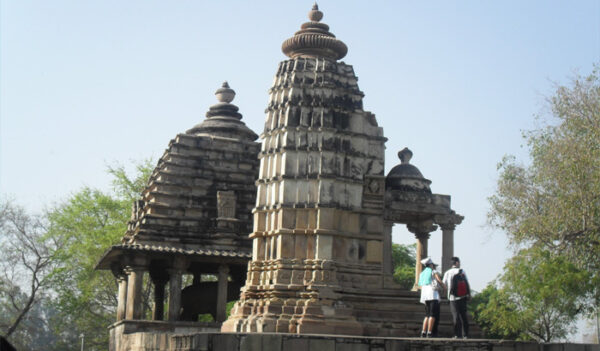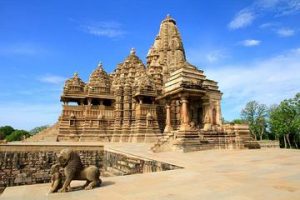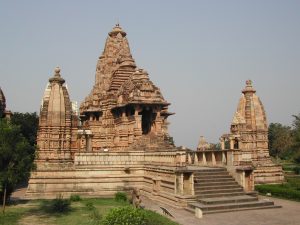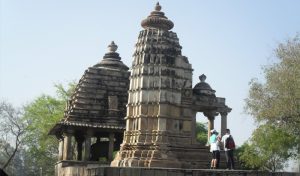Indian soil is the birth place of “Kamasutra”, the ancient Indian literature which is considered as the benchmark on sexual behaviour of humans. In the land of Kamasutra another marvel which has been a tourist attraction since ages and has astonished people across the globe is “The Khajuraho Temples”. The foundation of these temples was done by the great rulers of the Chandela Dynasty between 900 to 1130AD. History states that every monarch of this reign built at least one temple in his life. If we talk about the location of these temples then they are situated in the heart of India in the state of Madhya Pradesh. In the times, when Chandellas were ruling, this state is believed to be their religion capital. The edifices of these temples are so humungous that they are scattered over an entire area of more than nine sq. miles.
There is no denial to the fact that Khajuraho temples are a true Indian art prodigy. The beauty of these monuments is worth witnessing. If you happen to look closely you will happen to realise that these sculptures depict the classic lifestyle of women in the medieval times. These temples embody magnificent sculptures of different deities according to Hindu and Jain mythology. Each of the temples in the vicinity of Khajuraho was built using sandstone and various natural shades like pink and pale yellow. Every shrine contains a separate entrance, hall and a sanctum. If you have a closer look then you will notice the spiral superstructures which are used all along the rooms of these temples. The inspiration of these structures could be from the shikhara temple styles.
As you would enter from the Western Group, the first edifice which will catch your attention is the ‘Varaha Temple’. It has a comparatively small yet high structure which houses an intricately carved statue of the boar—Varaha. Right opposite to this temple is the sanctum called ‘Lakshmana Temple’. This holds an extensively elaborate structure and is located on a higher pedestal than others. The inside of this temple is empty but is ornamented by beautifully carved stone figures of humans along with other animals. On the outside a section can be found which gorgeously depicts the magnificent lives led by Chandela rulers. The magnificent example of Indian art: Khajuraho houses many temples. However, the Varaha and the Lakshmana are the most famous ones. Hence, details of these two temples is mentioned below.
The Lakshmana Temple:
This is one of the brilliant constructions in Khajuraho. This is considered to be an architectural marvel and is a living example of the intelligence of the creators of those times. This temple is one of the largest shrines among the Western Wing of the Khajuraho belt. The deity which resides within the vicinity of this temple is the Hindu God, Lord Vishnu. A portrait of Vaikuntha Vishnu can be seen in the sanctum. The architecture of this temple is simply mesmerising and the walls on the exteriors carry structures of more than six hundred deities. There is extreme uniqueness in the frame of this temple and the four subsidiary shrines which are built around it.
The Varaha Temple:
This is another temple which adorns the beauty of Khajuraho group of monuments. It enshrines the massive image of the boar incarnation of Lord Vishnu, Varaha. As per the mythology, Lord Vishnu took the form of a boar to defeat a demon called Hiranyaksha. This demon had taken earth and hid it in the cosmic ocean. For thousands of years the battle between these two continued and finally Varaha won. He carried the earth in between his tusks and restored it back in its correct place in the universe. Later on Lord Vishnu married Bhudevi (earth) in this particular avatar.
There are no two doubts about it that Khajuraho is a marvel of magnificent Indian art in the era of 10th to 12th century. The large edifice and jaw-dropping erotic sculptures provide a memorable experience to anyone who witnesses it. To most of the people these temples are an exhibition of various sexual postures. However, there is a much deeper meaning to these statues. The erotic figures give evidences to the lifestyles and fantasies of people of that era. They narrate stories of Gods, Goddesses and their devotees. All-in-all, visiting Khajuraho and witnessing the wonders of Indian art is an once-in-a-lifetime kind of an experience.




